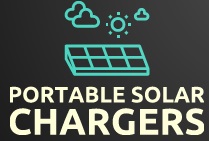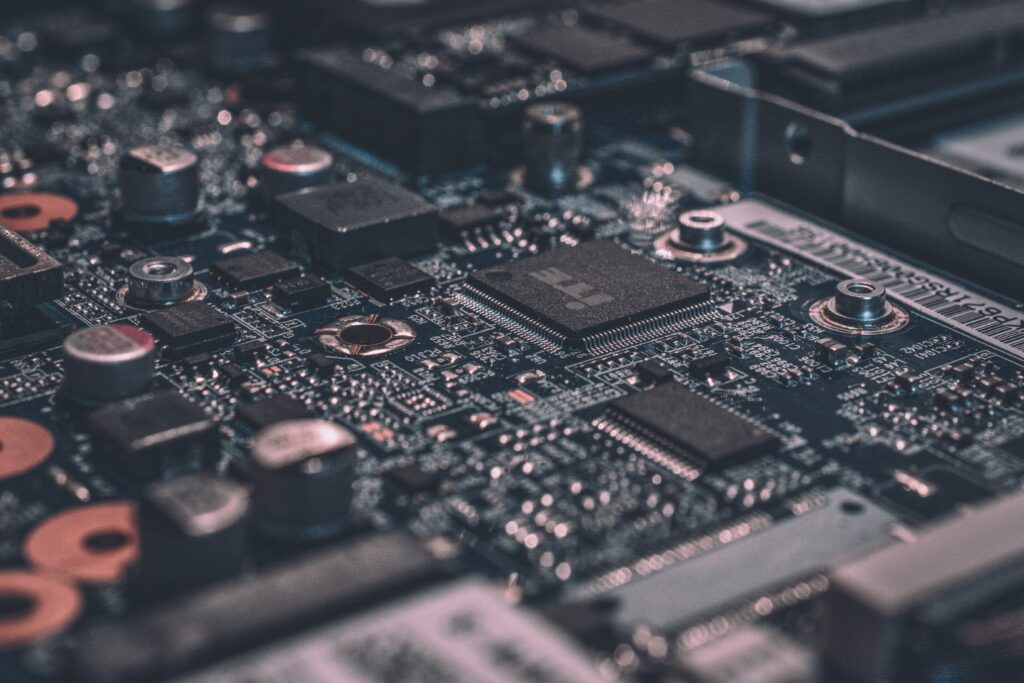Do you ever find yourself in a situation where your phone battery dies and you have no access to a power outlet? Well, fear not, because solar chargers are here to save the day! But you may be wondering, do solar chargers have built-in batteries? The answer to that question is not as straightforward as you might think. In this article, we will explore the world of solar chargers and uncover whether or not they come equipped with their own built-in batteries. So, let’s shed some light on this electrifying topic!
What Are Solar Chargers?
Definition
Solar chargers are devices that convert sunlight into electricity to charge electronic devices such as smartphones, tablets, cameras, and more. They are portable and harness the power of the sun to provide a sustainable and convenient charging solution, especially when you’re on the go and don’t have access to a traditional power source.
How Do They Work?
Solar chargers work by utilizing photovoltaic (PV) technology, which is the process of converting sunlight into electricity. The charger is equipped with solar panels made up of multiple solar cells. These cells contain semiconductor materials, typically silicon, which can generate an electric current when exposed to light.
When sunlight hits the solar panels of a solar charger, the photons in the light excite the electrons in the semiconductor material. This creates a flow of electrons, which is the electrical current. The current produced is then used to charge the built-in battery of the solar charger or directly power an electronic device.
Types of Solar Chargers
There are several types of solar chargers available in the market, each designed to cater to different needs and preferences. Let’s explore some of the common types:
-
Solar Chargers with Built-in Batteries: These solar chargers have integrated rechargeable batteries, allowing you to store the solar energy and use it to charge your devices even when the sun isn’t shining.
-
Traditional Solar Chargers Without Batteries: These chargers directly convert solar energy into electricity and require immediate use or connection to your electronic devices.
-
Power Banks: Power banks are portable batteries that can be charged using a solar panel. They offer the flexibility of charging your devices on the go without relying solely on solar power.
-
Grid-based Chargers: These solar chargers are designed to be connected to the electrical grid, allowing you to harness solar energy to charge your devices while also having the option to draw power from the grid when needed.
Benefits of Solar Chargers
Environmentally Friendly
One of the most significant advantages of solar chargers is their environmental friendliness. By utilizing the sun’s energy, these chargers produce clean and renewable electricity, reducing the carbon footprint associated with traditional energy sources. Solar chargers help in mitigating greenhouse gas emissions, air pollution, and dependence on non-renewable energy.
Cost-effective
Solar chargers can save you money in the long run. By charging your devices with solar power, you reduce your reliance on electricity from the grid, which often comes with costs. Additionally, solar energy is abundant and free, making it a cost-effective alternative to traditional charging methods. While the initial investment in a solar charger may seem higher than other options, the long-term savings outweigh the upfront cost.
Portable and Versatile
Solar chargers are designed with portability in mind. They are lightweight, compact, and easy to carry, making them an ideal choice for travelers, hikers, campers, and anyone constantly on the move. Solar chargers can be used in various outdoor settings, from remote wilderness areas to bustling urban environments. With the ability to charge your devices anywhere under the sun, you have the freedom and convenience of staying connected even in the most remote locations.
Solar Chargers with Built-in Batteries
Definition and Function
Solar chargers with built-in batteries are a popular choice for those who want to harness solar energy during the day and use it to charge their devices at any time, even when the sun is not shining. These chargers have rechargeable batteries that store the solar energy accumulated during the day and provide a power source for your devices when sunlight is not available.
Advantages
-
Flexibility: The built-in battery in solar chargers provides flexibility in charging your devices. You can charge the battery during the day and use it to charge your devices at night or during cloudy weather.
-
Extended Charging Time: With a built-in battery, you have a continuous power supply even without direct sunlight. This is especially useful during extended outdoor activities or emergency situations.
-
Battery Management: Solar chargers with built-in batteries often include features to monitor and manage the battery’s charge levels. This ensures optimal charging and prevents overcharging or damage to your devices.
Disadvantages
-
Limited Battery Capacity: The storage capacity of the built-in batteries in solar chargers is usually limited compared to standalone power banks. This means you may not be able to charge multiple devices or larger devices fully.
-
Charging Time: Charging the built-in battery itself can take time, especially when relying solely on solar power. This may require planning ahead to ensure you have enough power for your devices when needed.
Factors to Consider When Choosing a Solar Charger with Built-in Batteries
Battery Capacity
When selecting a solar charger with built-in batteries, consider the battery capacity. This is usually measured in milliampere-hours (mAh) and indicates the amount of charge the battery can hold. Choose one that aligns with your device’s power requirements and your charging needs. Higher capacity allows for more charges or charging larger devices but may result in a bulkier and heavier solar charger.
Charging Efficiency
The charging efficiency of a solar charger refers to how effectively it captures and converts sunlight into usable electricity. Higher charging efficiency means the solar charger can convert more sunlight into electricity, resulting in faster charging times and more power collected in a given amount of time. Look for chargers with high efficiency ratings for optimal performance.
Size and Weight
Consider the size and weight of the solar charger, especially if you plan to carry it with you for outdoor activities. A compact and lightweight charger is more convenient and easier to transport. However, keep in mind that larger chargers may have a higher capacity and charging efficiency.
Additional Features
Solar chargers with built-in batteries often come with extra features that can enhance your charging experience. These may include LED indicator lights to show the battery and charging status, built-in USB ports for easy device connection, and rugged construction to withstand outdoor conditions. Assess which features are important to you and choose a solar charger that meets your specific requirements.
Common Misconceptions about Solar Chargers with Built-in Batteries
Misconception 1: Doesn’t Solar Energy Charge the Battery?
Solar energy does charge the built-in battery of a solar charger, but it requires exposure to sunlight. The solar panels on the charger collect solar energy and convert it into electricity to charge the battery. However, the battery can store the energy for later use, enabling you to charge your devices even when sunlight is not available.
Misconception 2: The Battery Is Only Useful in Sunlight
While the battery in a solar charger is charged using solar energy, it can be used to charge your devices regardless of whether there is sunlight or not. The stored energy in the battery can be utilized during the night, in overcast conditions, or even indoors.
Misconception 3: Charging Speed Depends Solely on Solar Power
Charging speed is influenced by various factors, including the size of the solar panels, the capacity of the built-in battery, and the charging efficiency. While solar power plays a significant role in charging, the built-in battery can supplement and provide a stable source of power, resulting in faster charging times.
Misconception 4: Solar Chargers with Built-in Batteries Are Always Expensive
Although solar chargers with built-in batteries may have a higher upfront cost compared to other charging options, they can provide long-term savings in terms of reduced electricity bills and reliance on the grid. Additionally, the convenience and versatility they offer make them a valuable investment for individuals who frequently use electronic devices outdoors.
Alternatives to Solar Chargers with Built-in Batteries
Traditional Solar Chargers Without Batteries
If you prefer a more straightforward and cost-effective option, traditional solar chargers without batteries can be a great choice. These chargers directly convert solar energy into electricity, which can be used to charge your devices immediately or connected through a power bank for storage.
Power Banks
Power banks are standalone batteries that can be charged using a solar panel or through a traditional power source. They offer the advantage of storing energy for later use and are available in various capacities to cater to your charging needs. Power banks provide flexibility and can be used with or without solar chargers.
Grid-based Chargers
For those who have access to electrical outlets, grid-based chargers provide an alternative to solar charging. These chargers plug into the electrical grid and store energy in built-in batteries, allowing you to charge your devices by drawing power from the grid during low or off-peak times. While not as environmentally friendly as solar chargers, grid-based chargers can be a reliable option in urban environments.
Conclusion
Solar chargers with built-in batteries offer a convenient and sustainable solution for charging your electronic devices. They harness the power of the sun to provide renewable energy, reduce reliance on the electrical grid, and promote eco-friendly charging practices. When choosing a solar charger with built-in batteries, consider factors such as battery capacity, charging efficiency, size, and additional features to ensure you find the right charger for your needs. Don’t let misconceptions deter you from exploring the benefits of solar charging, and remember that there are alternative options available, such as traditional solar chargers without batteries, power banks, and grid-based chargers. Embrace the power of the sun and enjoy the freedom of portable and versatile charging with solar chargers!





